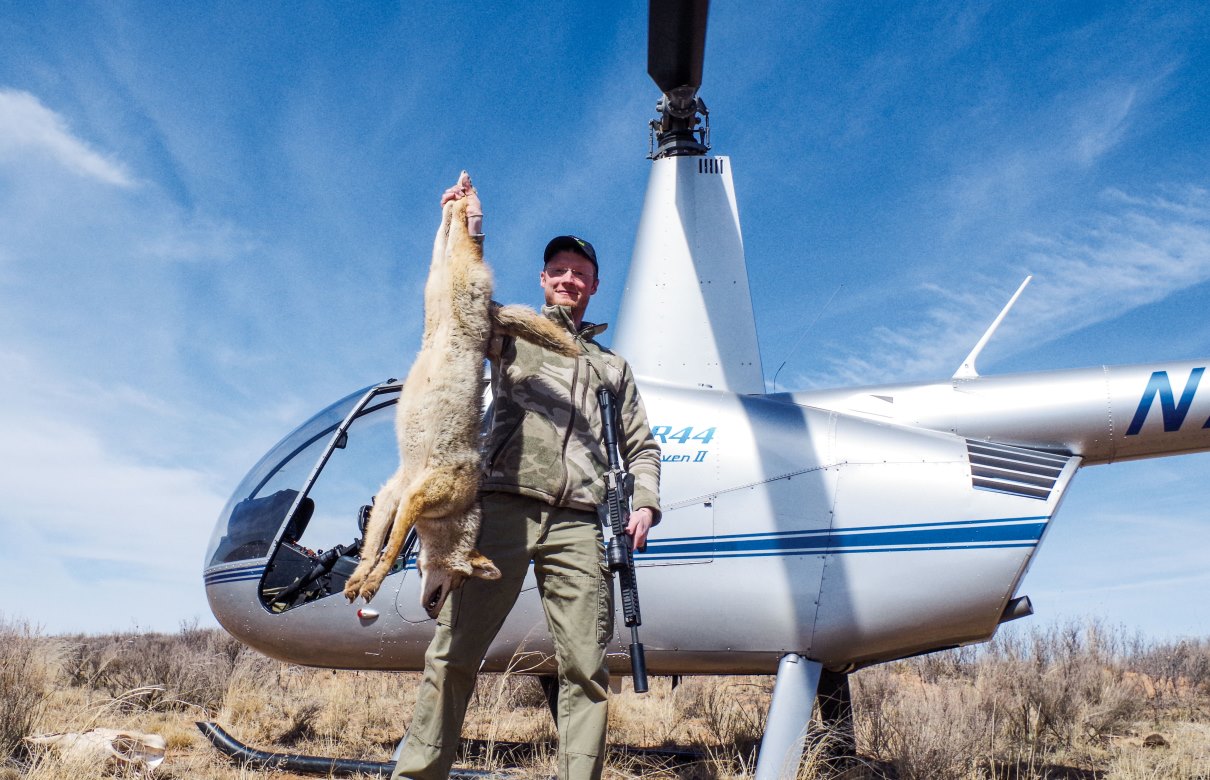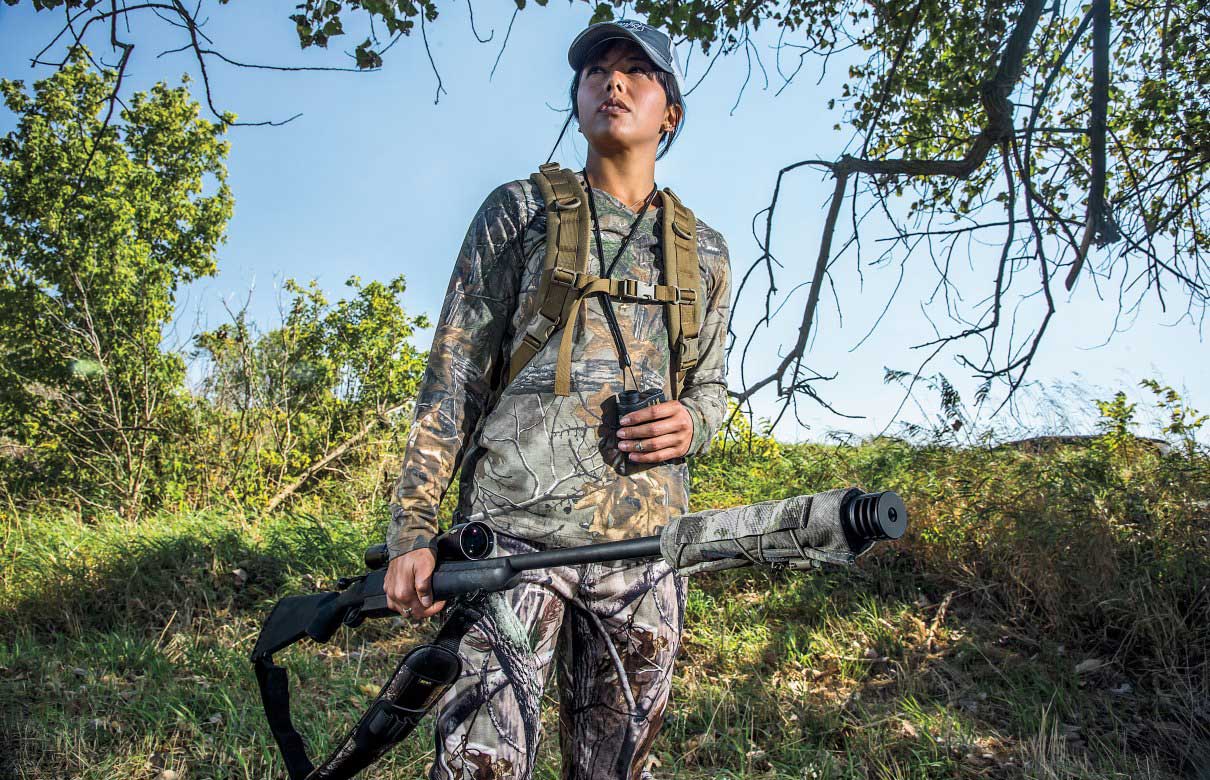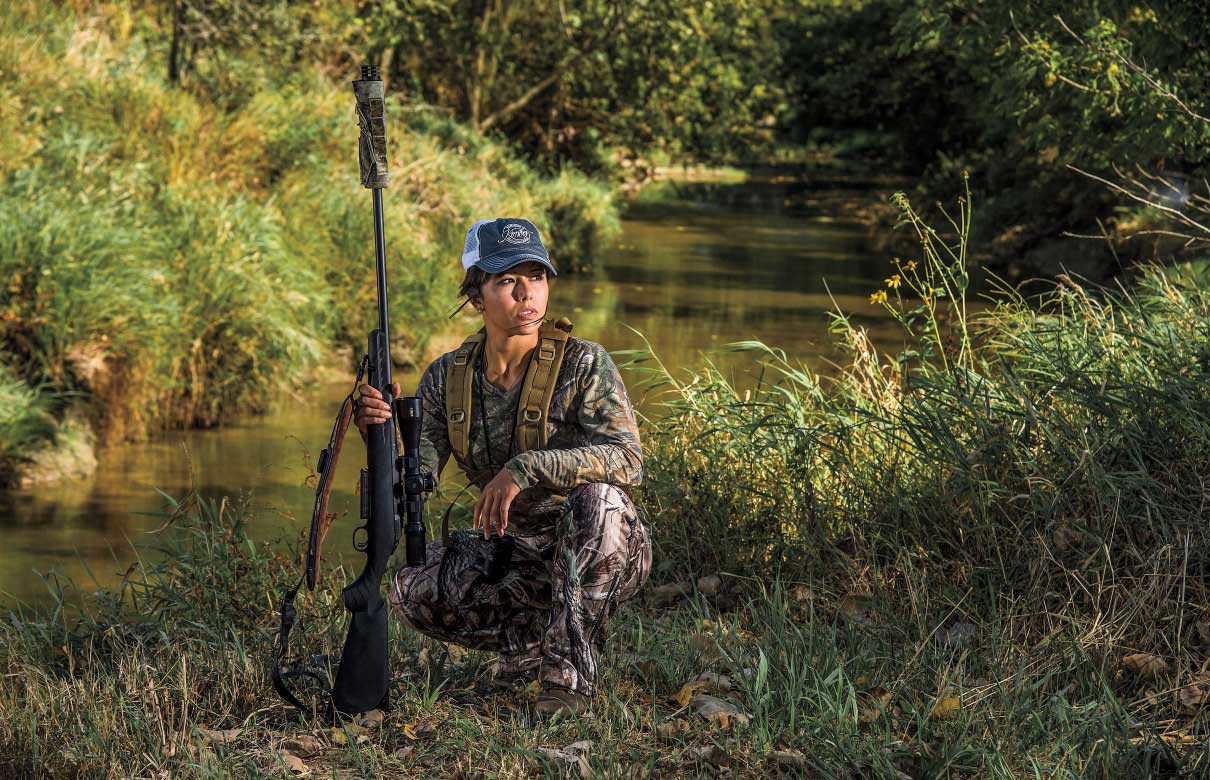Shhh! I'm Hunting
By: D. Faubion
 Hunters don't always have time to put in earplugs before a shot. The best option for hunters is to combat the noise at the source, with a suppressor. (Photo courtesy of "Shooting Times")
Hunters don't always have time to put in earplugs before a shot. The best option for hunters is to combat the noise at the source, with a suppressor. (Photo courtesy of "Shooting Times")
Save your hearing ' hunt suppressed
I watched through the scope as the elk tipped his antlers and emitted a bugle. A second later the beautiful noise reached my ears. More like a roar from Jurassic Park than a bugle near Park City, Utah, the sound – even from 310 yards – was remarkably loud.
But just how loud? Sound volume is relative to distance. According to the inverse-square law, which states that noise intensity drops off rapidly as sound radiates away from a point source, the noise level of the elk’s bugle at 300 yards was 1/100th as loud as if I’d been standing 30 yards from the animal.
+ or -3 dB
A sound’s strength is measured in units called decibels (dB). Rustling leaves are around 0 dB, a conversation maybe 60. Noises at or above 85 dB (an idling bulldozer, for example) can cause permanent hearing damage. Sound is a funny thing, and it’s interesting to note that noise doubles in intensity for every 3 dB increase, which means that a 157 dB gunshot is half as loud as one that’s 160 dB.
Speaking of 160 dB, that’s around the volume of each shot I fired from my Nosler rifle that day in Utah – a number not just twice as loud as 80 dB, but a number 256 times louder. The sound of the shot would have been harmless from a distance of 300 yards, but from three feet – and with unprotected ears – it caused permanent damage to my hearing.

Suppressors have advantages beyond sound reduction. In a non-autoloading firearm, recoil is reduced and velocity as well as accuracy are often increased. (Photo courtesy of “Shooting Times”)
Abuse it and Lose it
Hearing damage, however minuscule, occurs with each and every gunshot, so how do we best protect ourselves? It’s easy when plinking. Foam earplugs cost nothing and take little time to install. Bull elk aren’t as predictable as pop cans, and opportunities can vanish within seconds, so hunters may not have time to install earplugs before a shot.
The best option for hunters is to combat the noise at the source. A quality suppressor offers many attributes, such as recoil reduction and an increase in velocity and even accuracy in some cases. The main advantage, however, is that a suppressor will decrease a rifle’s report by 30 dB. Thirty dB may not sound like much, but it lowers a gunshot from the noise of a jet engine at 50 feet to a distant thunderclap, a reduction that will prolong the hearing of delicate ears. And not just of the shooter – others in earshot as well.
That being said, suppressors do have drawbacks. Price is a huge one, as is the time it takes to legally acquire one. A can also weighs about a pound and will increase the length of your firearm by a few inches. So what? Your hearing is far too valuable to let those get in the way.
Luckily, I learned the importance of protecting my hearing from my uncle Joe, a hunter who is nearly deaf from shooting and hunting without ear protection. According to Joe, in addition to rifles and shotguns, he did the majority of his damage with a .22 Mag. purchased when he was 18.
“After shooting that revolver, my ears would ring and my hearing would be impaired for a few days,” he said. “I thought it was just like a cold — a few days of discomfort and then you get well. I was wrong.”

Suppressors do increase the length and weight of the firearm. Sore muscles will heal; damaged hearing will not. (Photo courtesy of “Shooting Times”)
He certainly was. And as a result Joe lost a significant portion of his hearing. As tragic as that is, the other shooters in our family learned from Joe’s mistake. We go to great lengths to protect our hearing whenever we shoot … unless we’re hunting.
But that’s beginning to change, thanks in part to our home state of Washington legalizing the use of suppressors on firearms. Not surprisingly, Joe is leading the family’s charge to suppressordom.
“While it’s ridiculous that it’s required,” he said. “I have gone through the NFA requirements and now own nine suppressors or integrally suppressed firearms, ranging in size from .22 to .30 caliber. My grandchildren, who are now reaching the age to begin shooting, have never fired a gun without a suppressor and/or hearing protection. My hope is that they will be able to enjoy shooting and hunting as I have, but without the penalty of constant ringing in their ears and the loss of hearing I have sustained.”
Invest in Your Hearing
My time hasn’t yet come, but the clock is ticking for the BATFE to approve my father’s trust. Then he and I can join the ranks of enlightened hunters like Joe who’ve chosen to invest in their future and protect the precious gift of hearing. Hunting won’t be the same again. I can’t wait.